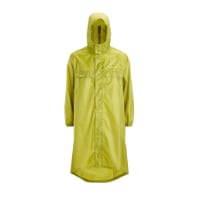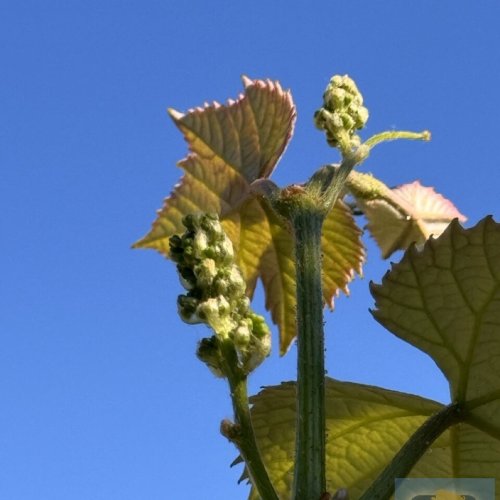Philla
New Member
- Time of past OR future Camino
- April 2016
Never get blisters again! Scientists spend two years studying runners to discover a single strip of surgical tape is all you need
From plaster to creams, and even wearing thicker socks, people use a number of ways to prevent blisters forming on their feet.
And now researchers believe they have finally found the best, and most scientific way to stop the annoying and painful lumps developing.
After studying 128 ultra marathon runners, the researchers said the trick lies in using just a single piece of everyday, cheap surgical tape. Ten years ago, Dr Grant Lipman was working as a doctor for endurance athletes who were running 25 to 50 miles a day in various parts of the world, from China to Antarctica to Chile.
Despite the harsh conditions and extreme exercise, the most common complaint he heard was about the pain and debilitation caused by foot blisters.
Multiple methods of blister prevention have been tried, Lipman said, including powders, antiperspirants, lubricants, tapes and adhesive pads.
But despite the numerous scientific studies on blister prevention over the years, there is little evidence to show that any of these methods work well, he said, until now.
TESTING HOW BLISTERS FORM
In 2014, Lipman and his colleagues recruited 128 runners participating in the 155-mile, six-stage RacingThePlanet ultramarathon event that crosses deserts around the globe, including the Gobi Desert and deserts in Jordan and Madagascar.
Paper tape was applied to just one of each of the runners' feet.
The untaped areas of the same foot served as a control.
The tape was applied by trained medical assistants to either the participants' blister-prone areas or, if they had no blister history, to randomly selected locations on the foot.
The paper tape was applied in a smooth, single layer before the race and at subsequent stages of the race, Lipman said.
The medical assistants followed the runners for 155 miles over seven days.
For 98 of the 128 runners, no blisters formed where the tape had been applied, whereas 81 of the 128 got blisters in untaped areas.
In his latest study, Lipman from Stanford University and colleagues found that inexpensive paper tape, the kind available at most pharmacies, when applied to blister-prone areas prior to exercise, successfully prevented both the incidence and frequency of foot blisters.
The tape, commonly referred to as surgical tape, is used for wound treatment.
It is only mildly adhesive, which has an advantage because it doesn't tear the blisters if they do occur.
'People have been doing studies on blister prevention for 30 or 40 years and never found anything easy that works,' said Lipman, who is the lead author of the study.
'I wanted to look at this critically.'
The senior author of the study is Brian Krabak, MD, a sports medicine physician affiliated with the University of Washington.
Over the years, in addition to the complaints from the extreme runners, Lipman has heard from military doctors, bemoaning the state of their military recruits' feet.
Blisters were keeping recruits from participating in basic training.
From his experience treating athletes and listening to his patients, Lipman drew anecdotal evidence that the paper tape method could provide the best answer. Then he set out to test the theory.
In 2014, Lipman recruited 128 runners participating in the 155-mile, six-stage RacingThePlanet ultramarathon event.
Paper tape was applied to just one of each of the runners' feet and the untaped areas of the same foot served as a control. The tape was applied by trained medical assistants to either the participants' blister-prone areas or, if they had no blister history, to randomly selected locations on the foot.
The paper tape was applied in a smooth, single layer before the race and at subsequent stages of the race, Lipman said.
The medical assistants followed the runners for 155 miles over seven days.
For 98 of the 128 runners, no blisters formed where the tape had been applied, whereas 81 of the 128 got blisters in untaped areas.
'It's kind of a ridiculously cheap, easy method of blister prevention,' Lipman said. 'You can get it anywhere. A little roll coasts about 69 cents, and that should last a year or two.'
He added, 'The best way to make it to the finish line is by taking care of your feet.'
From plaster to creams, and even wearing thicker socks, people use a number of ways to prevent blisters forming on their feet.
And now researchers believe they have finally found the best, and most scientific way to stop the annoying and painful lumps developing.
After studying 128 ultra marathon runners, the researchers said the trick lies in using just a single piece of everyday, cheap surgical tape. Ten years ago, Dr Grant Lipman was working as a doctor for endurance athletes who were running 25 to 50 miles a day in various parts of the world, from China to Antarctica to Chile.
Despite the harsh conditions and extreme exercise, the most common complaint he heard was about the pain and debilitation caused by foot blisters.
Multiple methods of blister prevention have been tried, Lipman said, including powders, antiperspirants, lubricants, tapes and adhesive pads.
But despite the numerous scientific studies on blister prevention over the years, there is little evidence to show that any of these methods work well, he said, until now.
TESTING HOW BLISTERS FORM
In 2014, Lipman and his colleagues recruited 128 runners participating in the 155-mile, six-stage RacingThePlanet ultramarathon event that crosses deserts around the globe, including the Gobi Desert and deserts in Jordan and Madagascar.
Paper tape was applied to just one of each of the runners' feet.
The untaped areas of the same foot served as a control.
The tape was applied by trained medical assistants to either the participants' blister-prone areas or, if they had no blister history, to randomly selected locations on the foot.
The paper tape was applied in a smooth, single layer before the race and at subsequent stages of the race, Lipman said.
The medical assistants followed the runners for 155 miles over seven days.
For 98 of the 128 runners, no blisters formed where the tape had been applied, whereas 81 of the 128 got blisters in untaped areas.
In his latest study, Lipman from Stanford University and colleagues found that inexpensive paper tape, the kind available at most pharmacies, when applied to blister-prone areas prior to exercise, successfully prevented both the incidence and frequency of foot blisters.
The tape, commonly referred to as surgical tape, is used for wound treatment.
It is only mildly adhesive, which has an advantage because it doesn't tear the blisters if they do occur.
'People have been doing studies on blister prevention for 30 or 40 years and never found anything easy that works,' said Lipman, who is the lead author of the study.
'I wanted to look at this critically.'
The senior author of the study is Brian Krabak, MD, a sports medicine physician affiliated with the University of Washington.
Over the years, in addition to the complaints from the extreme runners, Lipman has heard from military doctors, bemoaning the state of their military recruits' feet.
Blisters were keeping recruits from participating in basic training.
From his experience treating athletes and listening to his patients, Lipman drew anecdotal evidence that the paper tape method could provide the best answer. Then he set out to test the theory.
In 2014, Lipman recruited 128 runners participating in the 155-mile, six-stage RacingThePlanet ultramarathon event.
Paper tape was applied to just one of each of the runners' feet and the untaped areas of the same foot served as a control. The tape was applied by trained medical assistants to either the participants' blister-prone areas or, if they had no blister history, to randomly selected locations on the foot.
The paper tape was applied in a smooth, single layer before the race and at subsequent stages of the race, Lipman said.
The medical assistants followed the runners for 155 miles over seven days.
For 98 of the 128 runners, no blisters formed where the tape had been applied, whereas 81 of the 128 got blisters in untaped areas.
'It's kind of a ridiculously cheap, easy method of blister prevention,' Lipman said. 'You can get it anywhere. A little roll coasts about 69 cents, and that should last a year or two.'
He added, 'The best way to make it to the finish line is by taking care of your feet.'








